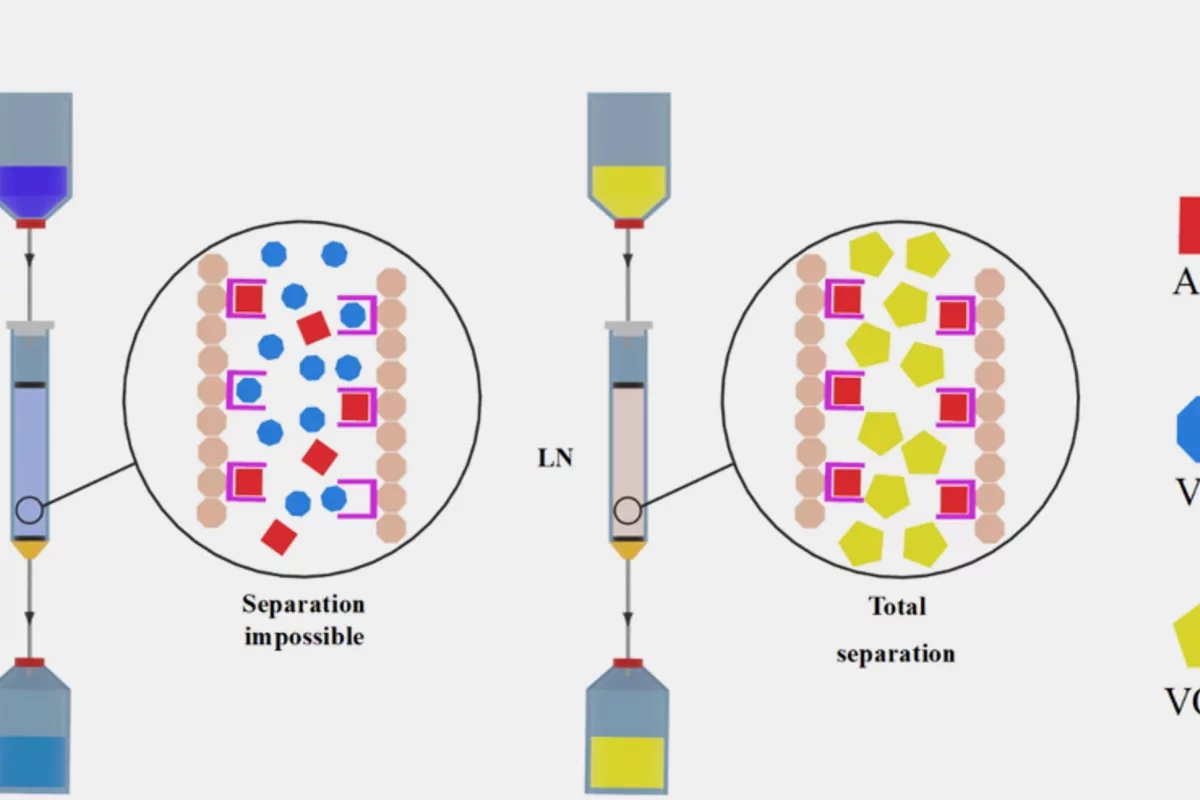The Isotope and Target Chemistry (ITC) group at the Paul Scherrer Institute (PSI) develops various radiochemical procedures to completely separate and recover individual radionuclides. These procedures are designed for ongoing irradiation experiments or for processing waste produced in past experiments. The goal is to individually and completely separate each valuable radionuclide present in the waste material. This recycling allows access to valuable radionuclides that are used for various studies. Ideally, separation procedures are optimized to be simple and straightforward, preferably using a single adsorption chromatography column and without a stable carrier, to achieve maximum specific activity.
During the SINCHRON project, significant amounts of waste were produced, from which valuable radionuclides like (26Al, 41,45Ca, 44Sc/44Ti) could be recovered, in addition to the primary radionuclide of interest, 32Si. For this purpose, 150 vanadium discs (approximately 420 mg each, 99.8% purity, from Goodfellow Cambridge Limited, U.K.) were irradiated for two years in the SINQ (Swiss Spallation Source) Target Irradiation Program (STIP), using the High-Intensity Proton Accelerator (HIPA). After a cooldown period to allow short-lived radionuclides to decay, the V-discs were dissolved and processed for 32Si. The residual solution was found to contain several exotic radionuclides of interest for recovery as non-carrier added. Among these 26Al was partially separated and processed at ITC, yielding a specific activity of 5–10 Bq/g.
Developing a new and improved 26Al separation process based on a single column adsorption/desorption step would be highly advantageous. The main benefit would be the simplification of the process, as the waste samples are highly active due to 60Co, and reduced operating time would minimize radiation exposure. Additionally, avoiding further waste generation and achieving higher specific activities of no-carrier added 26Al would be beneficial for future experiments.
The importance of 26Al spans multiple scientific domains, including radiometric and cosmic ray exposure dating, environmental tracing, and archaeological investigations. Its role in radiotracer studies helps unravel aluminum’s behavior in living organisms and track its movements in various materials. In astrophysics, 26Al aids in understanding nucleosynthesis processes within stars and supernovae. Additionally, in environmental monitoring, it helps resolve terrestrial processes.
Contact
Dr. Đorđe Cvjetinović
Paul Scherrer Institut
Isotope and Target Chemistry
+41 56 310 57 41
djorde.cvjetinovic@psi.ch

